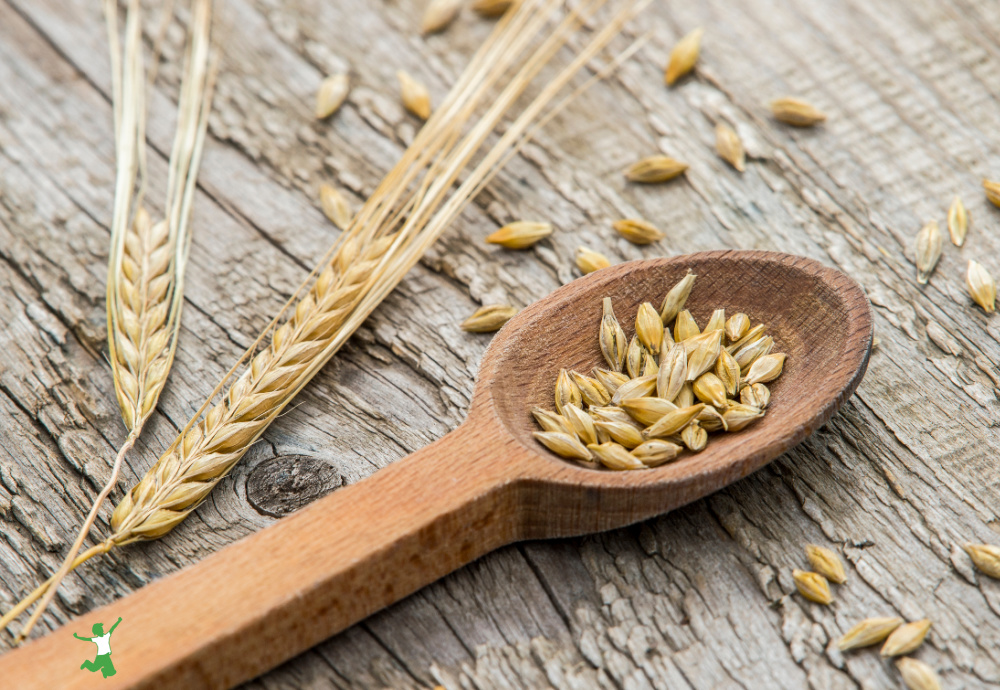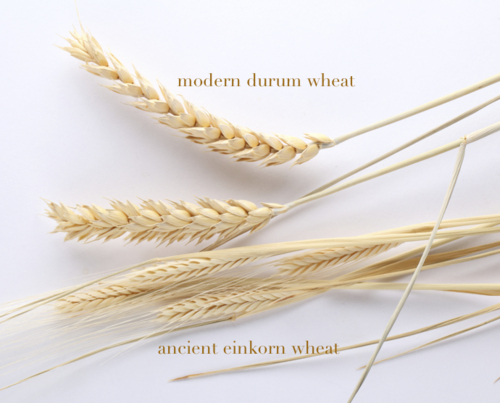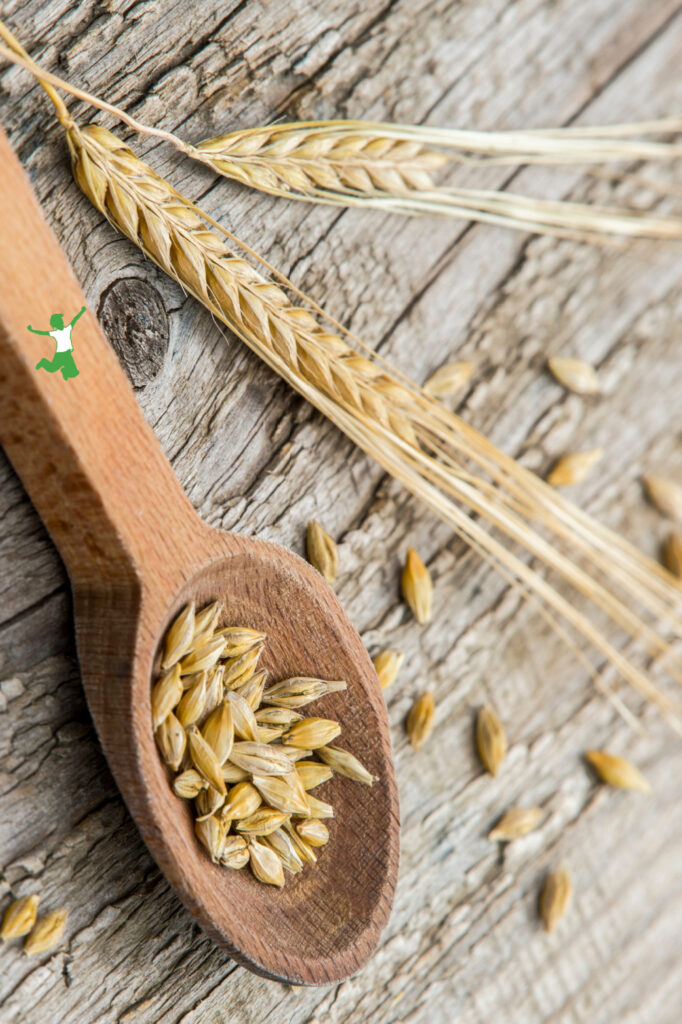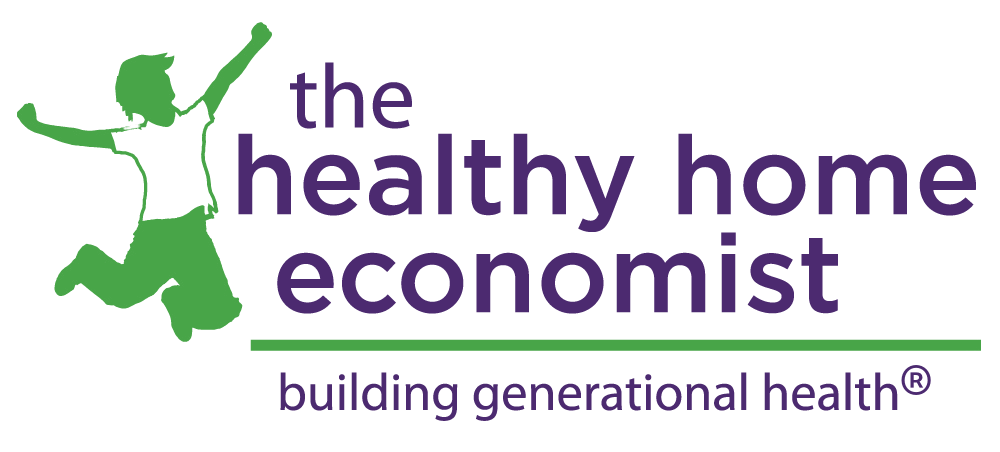There are four big reasons why einkorn is, by far, the best form of wheat to eat even when compared to other ancient grains like spelt, emmer, and kamut.

Most people who love to bake bread, pastries, and other goodies do not realize that einkorn is the best type of wheat to use.
Twenty-five or so years ago, I used to purchase organic white wheat (hard and soft) and spelt in bulk from a local grain co-op for my baking endeavors.
Grinding grain into fresh flour is certainly the most nutritious and tastiest way to bake! I also did this to avoid the conventional toxic wheat desiccated with gut-destroying glyphosate.
Caveat: Baking with freshly ground flour is only better if the bread is traditionally prepared.
Otherwise, the antinutrients like phytic acid are not broken down and harm to gut health is likely over time.
There certainly is a huge difference between modern processed wheat (hybridized by irradiation) and the organic, ancient grains you grind yourself at home.
I remember when I was breastfeeding my youngest child, if I ate so much as a mouthful or two of processed wheat at a restaurant, she would spit up for one or sometimes even two days!
If I ate organic wheat that I ground myself and either sprouted, soaked, or sour-leavened (sourdough), however, she never had any spit-up issues.
To me, this was a huge testament to the radically improved digestibility of wheat that is prepared using the wise methods of ancestral cultures.
Beware of persuasive influencers who claim that all you need to do is grind freshly ground flour and bake bread with baker’s yeast with no proper preparation such as soaking, sprouting or sour-leaving the dough necessary.
This approach is not how traditional societies ever baked their bread, and it is a recipe for serious gut issues!
Most people do not know that baker’s yeast is actually a modern invention only used in the past few centuries!
It quickly gained traction because it made baking faster and easier (NOT healthier). This is the case even when using freshly ground flour!
These quick rise breads using baker’s yeast gradually displaced traditional sourdough to the detriment of those who embraced this early “modern” cooking convenience.
Einkorn Benefits over Modern Wheat
With traditional baking the way to go (using a sourdough starter and NOT baker’s yeast), let’s talk about einkorn as the best type of wheat to bake with.
There are four reasons why I prefer to bake with einkorn wheat and no other type of ancient grains.
This isn’t to say I never use anything else, but if given the choice, I prefer to use einkorn.
Note that einkorn is not to be confused with farro or heirloom wheat.
Better Taste
My first experience baking with einkorn occurred after I received a thoughtful gift of, among other things, einkorn flour and wheat berries. I was delighted when I ground the einkorn into flour and saw how light and white it was.
I am not a fan of bran and am not of the food philosophy that all that fiber is actually good for your gut.
Fiber is a band-aid that covers up the root causes of constipation, a very common symptom of gut imbalance.
I recommend the book Fiber Menance as a good read on the subject.
The truth is that the unhybridized form of wheat…einkorn is the only one…does not have that much bran!
I was thrilled to see that my family thoroughly enjoyed the soaked waffles made with freshly ground einkorn flour.
Later on, I learned to make sprouted einkorn waffles that were more convenient but still highly digestible.
From that point, I gradually incorporated using einkorn for all my baking needs including this very popular no knead sourdough bread recipe.
Most Digestible
Because einkorn is unhybridized and low in bran, it is the most digestible form of wheat you can eat.
While my properly prepared grain dishes made with white wheat or spelt digest fine for our family, you can tell that the same dishes make with einkorn feel even better in the stomach.
This is possibly because einkorn contains good gluten, different on a molecular level from modern gluten in all other forms of wheat including ancient grains like spelt.
Better digestion means better absorption of nutrients, so einkorn surpasses the competition in that category as well.
Visually Distinctive

The first thing I noticed when I ground einkorn into flour for the first time was how much smaller a grain of einkorn is compared with a grain of modern wheat. They are about half the size!
In addition, I noticed that my grain grinder makes less noise when grinding einkorn berries into fresh flour because of softer, low bran kernels.
The distinctive crease on one side of a grain of modern wheat is also absent from kernels of einkorn.
The reason for the differences is that over the centuries, the genetics of wheat gradually changed due to human cultivation practices.
Year after year, farmers selected the seeds at harvest time that suited the goal of higher yields and MORE gluten.
This worked best for big farms and larger-scale agriculture, production, and distribution of wheat products.
The ONLY Unhybridized Wheat

Einkorn is like most plants in that it is diploid.
This means that einkorn contains only 2 sets of chromosomes.
About 2,000 years after einkorn wheat, nature created emmer via the natural hybridization of 2 wild grasses.
Consequently, emmer has 4 sets of chromosomes. Kamut and durum (bulgur) wheat are both descendants of emmer.
Spelt, an heirloom wheat, is the result of hybridization between cultivated emmer and another wild grass. Thus, spelt contains six sets of chromosomes.
Modern wheat is a descendant of spelt.
As you can see, einkorn is the purest and most ancient form of wheat available. With only 2 sets of chromosomes, a very different composition of gluten, and low bran, it is the most digestible form of wheat for baking at home.
Where to Source Quality Einkorn
The only downside of einkorn is that it is not widely available and tends to be more expensive than other types of wheat. It is still quite new to the North American market.
If you are sourcing organic einkorn berries, I recommend this quality brand.
If you need organic sprouted einkorn berries for more convenient baking, this farm based in the United States is my preferred source.
Have you tried einkorn wheat yet? If so, what observations have you made about this ancient, unhybridized wheat?









Made my first batch of einkorn bread today.
Can it be used like regular wheat?
How do you grind your own wheat at home? Will a vitamix work?
Yes, you need the dry container for Vitamix, but it works perfectly.
Wheat grinded with non-stone mill loses all the benefits because during the grinding process the benefits of stone grain mill are that it keeps the grain in low temperature and avoiding overheat over 60 degrees C will keep all the nutrients, vitamins, iron, enzimes etc. Buy a stone electric grain mill.
depends on the speed the mill runs at. I have a good sized steel burr mill that I run at moderate speed (10HP 3 phase motor on it) the meal/flour coming out is warm but not hot. It gets much hotter when cooked. A small hand cranked burr mill for home use is much slower than mine and heats very little. Commercially flour is ground with a hammer mill because of the volume they can put out. Completely different action.
While we are on grain subject, any one have opinions or tips on barley? (I know it is not gluten free, but other thoughts?). I have had a hard time cooking it, but I cannot even make rice. However I started making my own bread and want to start making my own flour soon
The Healthy Home Economist what about Organic Emmer? Is that ok? Or Triticale? I’m trying to learn 😉 Thanks!
i wish! but now im not eating any grains at all :p
I have read that the reason there is no GMO wheat is that farmers want Roundup to kill the wheat to make it easier to harvest, and they spray it with Roundup a few days before harvest. A good reason to go organic if that is true.
I can’t speak for all wheat farmers but I dated a wheat farmer for awhile (through a harvest) and they certainly didn’t spray anything on their crop to kill it. They wouldn’t have dreamed of it! They used chemical fertilizer and maybe some herbicides if weeds were bad in a particular area, but usually not even then because they didn’t want to waste the money. They also bug bombed it in the silos {shudder} but I never did heard of anyone using round up to kill it before harvest. They were a pretty big family farm and so were their friends but maybe big corporations are different.
I DO NOT eat wheat period!! Need to read Wheat Belly, author William Davishttp://youtu.be/UbBURnqYVzw
I felt that way too until I travelled through Europe for 5 weeks. I hadn’t touched bread in 7 years! I ate bread every day in Greece that was made by hand and noticed I had no problem with it. That’s when I started looking into these ancient grains. Since switching to Einkorn, we are loving our bread again. Bread is not bad, but American wheat should be avoided at all costs. This is an ancient form of wheat grown without contamination in Italy and other parts of Europe. It’s not new.
I get organic sprouted flours like einkorn from healthyflour.com from Fitzpatrick, AL in the USA and have for over 10 years now. I grind it in my vita mix blender with a special grain container. In our country we have good food here too. More and more natural organic foods all the time.
Any links on how to prepare, grind it? What about soaking and the waffle bread recipes? Is it easy to digest even for someone with seasonal allergies. Thanks 🙂
I’m made bread and it was really good.